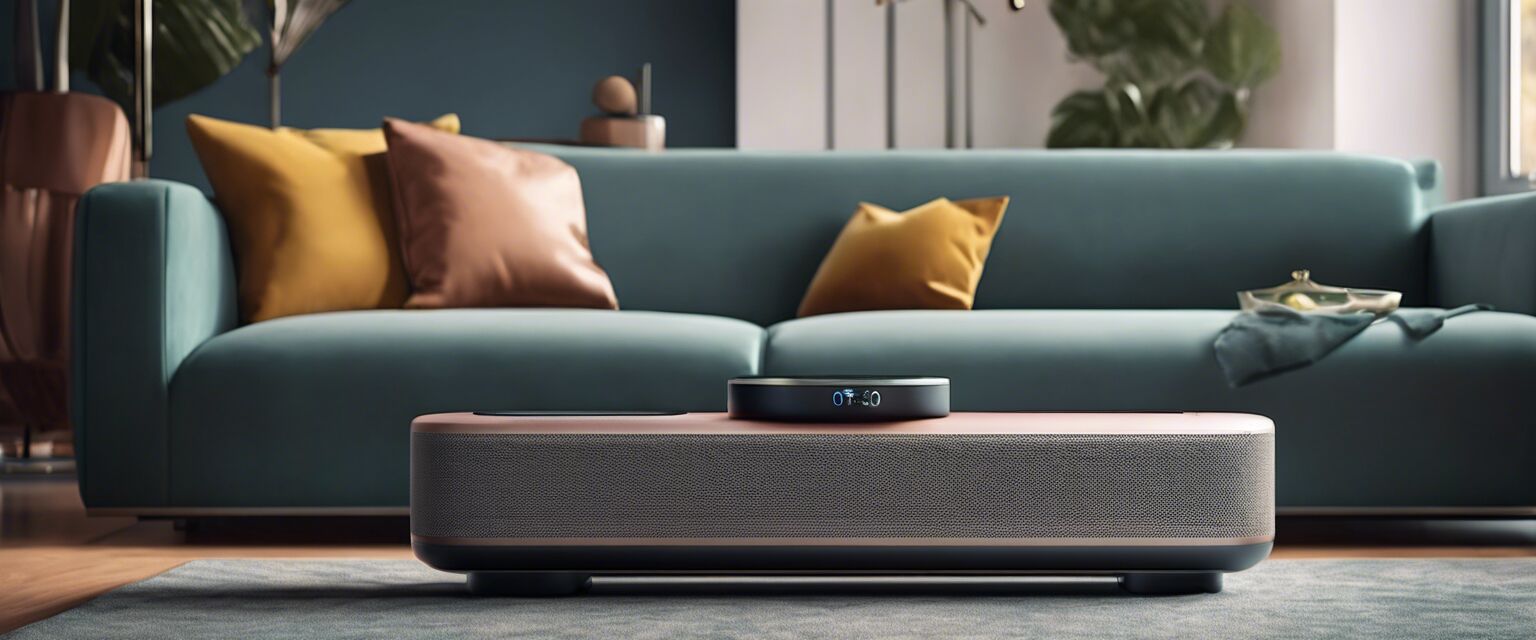
Smart Lighting Solutions
- Smart lighting enhances home aesthetics while offering convenience.
- Different types include smart bulbs, smart switches, and smart fixtures.
- Integration with other smart devices is possible for automated control.
- Energy efficiency is a major benefit of smart lighting solutions.
- Emphasizing ambiance can transform any space significantly.
Lighting is more than just a necessity; itâs a vital component of home decor that greatly enhances the aesthetic of your living space. Smart lighting solutions not only add to the beauty of your home, but also provide flexible, energy-efficient options that cater to your lifestyle. In this guide, weâll explore various smart lighting options that are available, their features, and how they can elevate your home decor.
Types of Smart Lighting Solutions
| Type | Description | Benefits |
|---|---|---|
| Smart Bulbs | LED bulbs that can be controlled via apps or voice. | Energy-efficient, customizable colors, and dimmable features. |
| Smart Switches | Traditional switches that operate smart bulbs or fixtures. | Control lighting from the wall or remotely via an app. |
| Smart Fixtures | Integrated lighting solutions that come with smart technology built-in. | Clean design, no extra gadgets needed, and often energy-saving. |
| Smart Light Strips | Flexible LED strips that can be placed in various locations. | Perfect for accent lighting and creating a unique atmosphere. |
How Smart Lighting Works
Smart lighting systems use cutting-edge technology to automate and enhance the way we illuminate our homes. Hereâs how they work:
- Connectivity: Most smart lighting solutions connect to your home Wi-Fi network, allowing you to control them remotely through a smartphone app.
- Voice Control: Many smart lights are compatible with voice assistants like Amazon Alexa, Google Assistant, and Apple HomeKit.
- Scheduling: You can set schedules for your lights to turn on or off automatically, promoting energy efficiency and convenience.
- Scenes and Routines: Some systems allow you to create specific scenes or routines, changing the ambiance of your house instantly.
Energy Efficiency and Cost Savings
Switching to smart lighting can lead to significant energy savings. Hereâs why:
- Smart bulbs consume less electricity compared to traditional incandescent bulbs.
- With automated timers, you can avoid leaving lights on unnecessarily.
- Some systems provide energy usage insights, helping you make informed decisions about your lighting habits.
Cost Analysis
| Item | Traditional Lighting | Smart Lighting |
|---|---|---|
| Initial Cost (for 6 bulbs) | $30 | $80 |
| Annual Energy Cost | $60 | $20 |
| Lifetime (years) | 1 | 5 |
| Total Cost Over 5 Years | $330 | $120 |
Integrating Smart Lighting with Other Systems
Smart lighting can be seamlessly integrated with other smart home devices. Hereâs how you can get the most out of your smart lighting:
- Security Systems: Set your lights to simulate occupancy while you are away.
- Smart Thermostats: Coordinate lighting with your home's heating and cooling for maximum efficiency.
- Entertainment Systems: Sync your lighting with music and video for an immersive experience.
Key Features to Look For
When selecting smart lighting solutions, keep an eye out for these essential features:
- Compatibility with existing smart home systems.
- User-friendly mobile application or interface.
- Variety of colors and dimming features.
- Energy consumption tracking and reporting.
Installation Considerations
Installing smart lighting can be straightforward, but here are a few things to consider:
- Ensure your Wi-Fi connection is strong in the areas where you plan to install smart fixtures or bulbs.
- For smart switches, it may require more involved electrical work, possibly hiring a professional.
- Always read the instructions thoroughly for the specific system you choose.
Tips for Beginners
- Start small by replacing just one room's lighting with smart options.
- Experiment with different settings and scenes to find what you enjoy the most.
- Check for compatibility with your existing smart home devices before investing.
- Look out for product reviews and testimonials to gauge reliability and performance.
Pros
- Enhanced energy efficiency.
- Customizable atmosphere.
- Remote control capability.
- Integration with other smart devices.
Cons
- Higher initial cost.
- Reliance on Wi-Fi connectivity.
- Potential compatibility issues with some systems.
- Maintenance of smart technology may be required.
Conclusion
Smart lighting solutions are a worthwhile investment that adds value to your home decor and enhances your living experience. By upgrading to smart lighting, not only do you benefit from energy efficiency, but you also gain the ability to control your homeâs ambiance like never before. Explore your options, consider integration with other smart devices, and enjoy the modern conveniences that smart lighting brings to your life.










